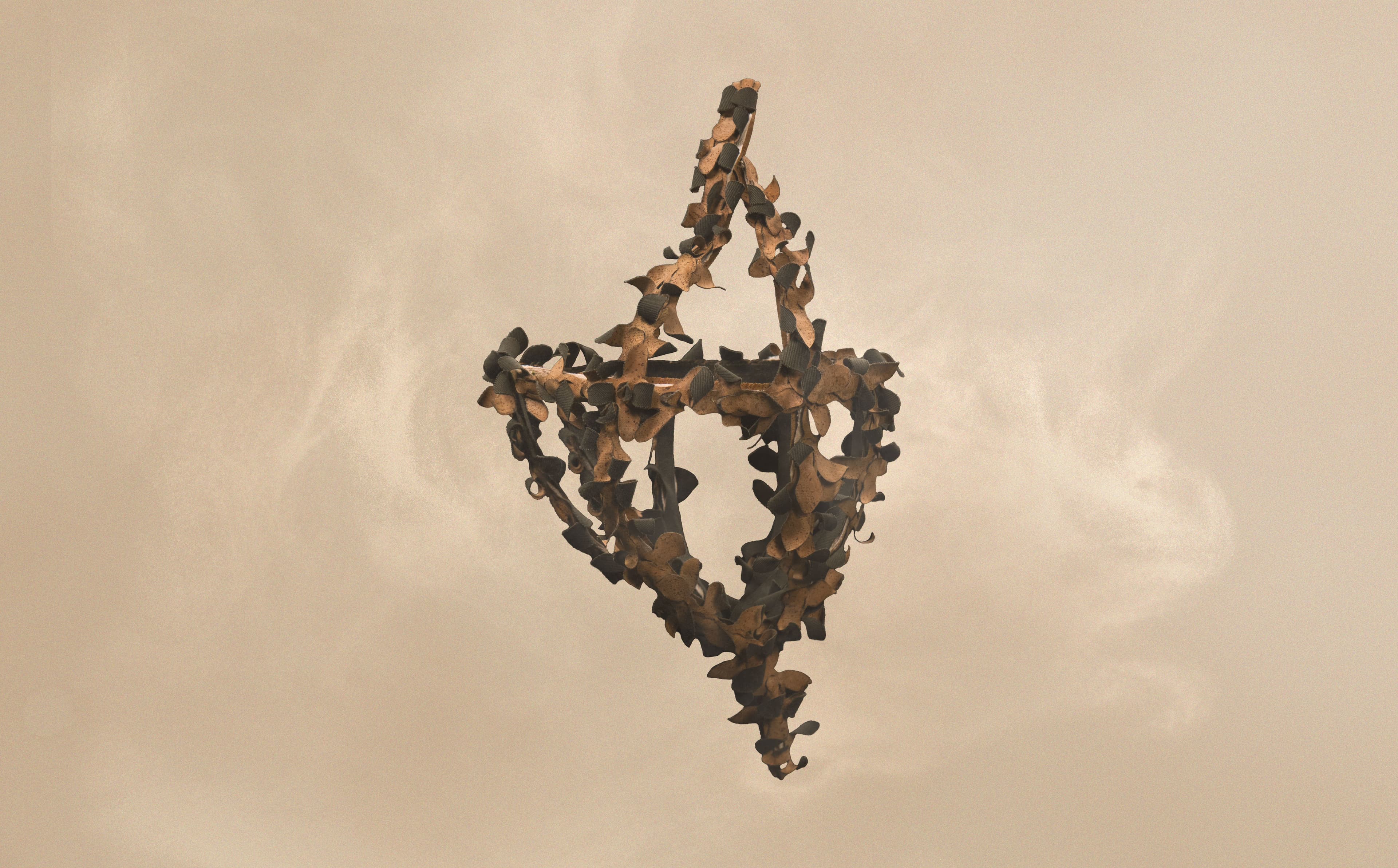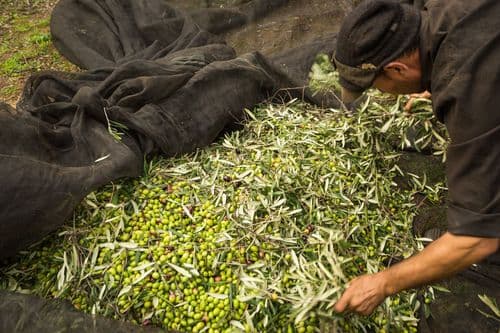Key Points
- B. subtilis spores deliver zero-power RH sensing via visible motion.
- 50+ substrates tested; cork wins for stability and cellular structure.
- Chamber tests show repeatable, reversible response.
- Cork brings regenerative sourcing (9-year bark harvest; long-lived trees).
Full interview with Weronika Turowska
1. What specific properties of Bacillus subtilis spores made them ideal for creating a hygromorphic material that could function as both a humidity sensor and a sculptural mobile?
Bacillus subtilis spores have a remarkable ability to physically respond to changes in relative humidity. When the air becomes more humid, they absorb water and swell; when it’s dry, they contract. This microscopic expansion-contraction cycle can be amplified through structural design to create visible movement. Unlike most responsive materials, the spores require no power or electronics - they operate purely through moisture exchange. They are also extremely robust: studies show that B. subtilis spores can remain viable for years, even after repeated dehydration-rehydration cycles. Their stability, responsiveness, and safety make them a uniquely reliable bio-actuator for long-term applications in architecture and design as well in craft and mobile design.
I find the concept of microbial interiors fascinating - how bacteria that are naturally found in soil, probiotics, or fermented foods can actively support and enrich our indoor environments. There is a growing shift in how we perceive sterilisation, recognising microbes not as contaminants to eliminate, but as vital participants within material systems and the spaces we inhabit.
Objects as active players in spaces: The integration of livingness into artefacts represents a shift towards co-evolutionary design, where materials and users exist in a continuous cycle of adaptation and mutual transformation.
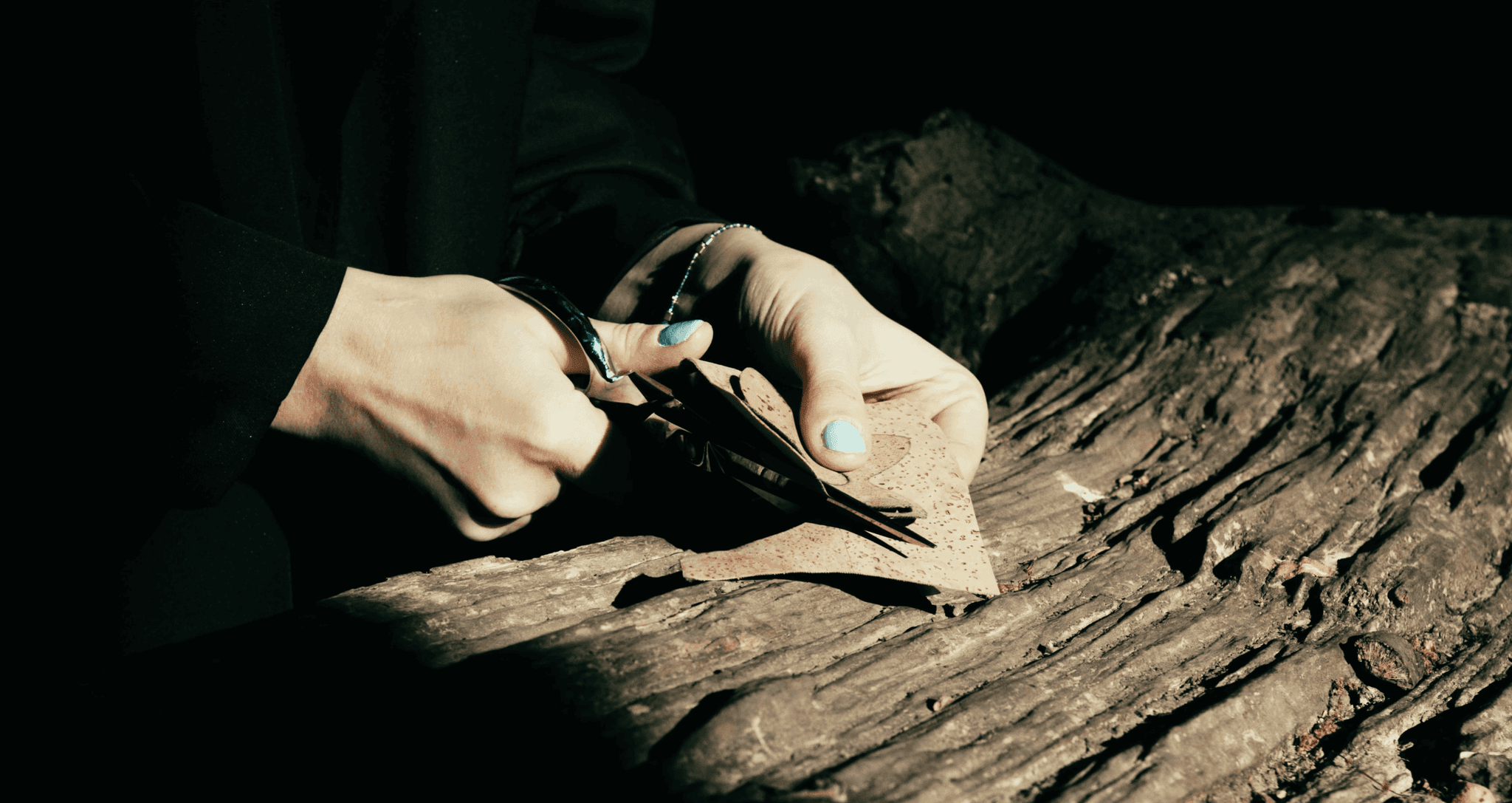
2. Cork is a familiar bio-based material, but embedding it with living bacterial spores pushes it into new territory. What were the technical challenges in stabilising this hybrid system for interior environments?
The biggest challenge was material compatibility. Most natural substrates are hydrophobic, meaning they repel water and prevent the spores from expressing their mechanical properties. I collaborated with Dr. Emily Birch from the Living Construction Hub (HBBE) in Newcastle, whose research primarily focused on latex. However, working with spores presented uncharted territory - there was virtually no prior research I could rely on, as microbial hygromorphs remain largely unexplored. Our goal was to identify materials capable of functioning as dynamic, living interfaces - responding to environmental humidity while supporting microbial integration.
I tested over fifty natural and non-natural substrates, including fibres, veneers, and composites, and ultimately identified only three that supported a consistent spore response.
These findings suggest that material gsm, coating integration, and application technique are all critical to achieving reliable hygromorphic movement. For further design development cork was chosen based on its regenerative properties: harvested from the bark of the Quercus suber tree, the material can be collected every nine years.
Additionally, the trees can live to up to 250 years, acting as significant carbon sinks.
Cork was ultimately selected for its regenerative properties, lightweight, cellular structure, and dimensional stability.
Worth mentioning that my research began by examining indoor environments and considering this striking statistic:
“The average person spends 90% of their time indoors. Air pollutants are 2 to 5 times higher in most buildings than outdoors.”
As living, breathing entities, we inhabit a dynamic, living planet. Yet our home environments are often static, stripped of “livingness” by obsessive cleaning and sterilisation. In the process, we overlook the crucial role microbes play - not only for our own health but for the wellbeing of the spaces we occupy.
In parallel, my craft research took me to an open-air museum in Nowogród, Poland. There, I learned how traditional communities lived attuned to the rhythms of nature. Without plastic windows or modern synthetic materials, they honoured the land, using natural resources thoughtfully and sustainably. I was struck by the stories the guide shared - about daily life, seasonal cycles, and the integration of environment into household wellbeing.
It was during this visit that I encountered “mythical” sculptural objects: kinetic folk mobiles designed to bring prosperity and protection to the household. I discovered in these objects a unique combination of artistry, symbolism, and environmental sensitivity.
3. In moving away from electronics, you’ve created a passive sensing system. How did you test the material’s consistency and responsiveness across variable humidity conditions?
I’ve designed and built a controllable humidity chamber to test the material under precisely defined environmental conditions - after the spore suspension application, the microbial hygromorphic material had to undergo an equilibration, a full hydration and dehydration cycle. I monitored the samples using time-lapse imaging to measure the amplitude, speed, and repeatability of movement.
The results showed consistent, reversible responses across multiple cycles, confirming that the spores’ mechanical behaviour could be treated as an indicator of humidity. This provided a proof of concept for a fully passive sensing material - one that visualises environmental change through motion rather than numerical data.
When the material began showing a response during the calibration period, it was my first indication of its potential for further development. Through visual observation, the sensing system could be both monitored and controlled.
During the process, outside of working in the Grow Lab at Central Saint Martins with the help of Dr. Shem Johnson (to grow and sporulate the bacteria), I created a “DIY” shed lab where I could test the spores’ viability and responsiveness. Even when samples were kept indoors, they still responded to environmental changes - for example, a sample on my windowsill curled noticeably during a sunny period and during my shed visits, I observed differences in shapes, which further deepened my connection to the research and to these microbial materials.
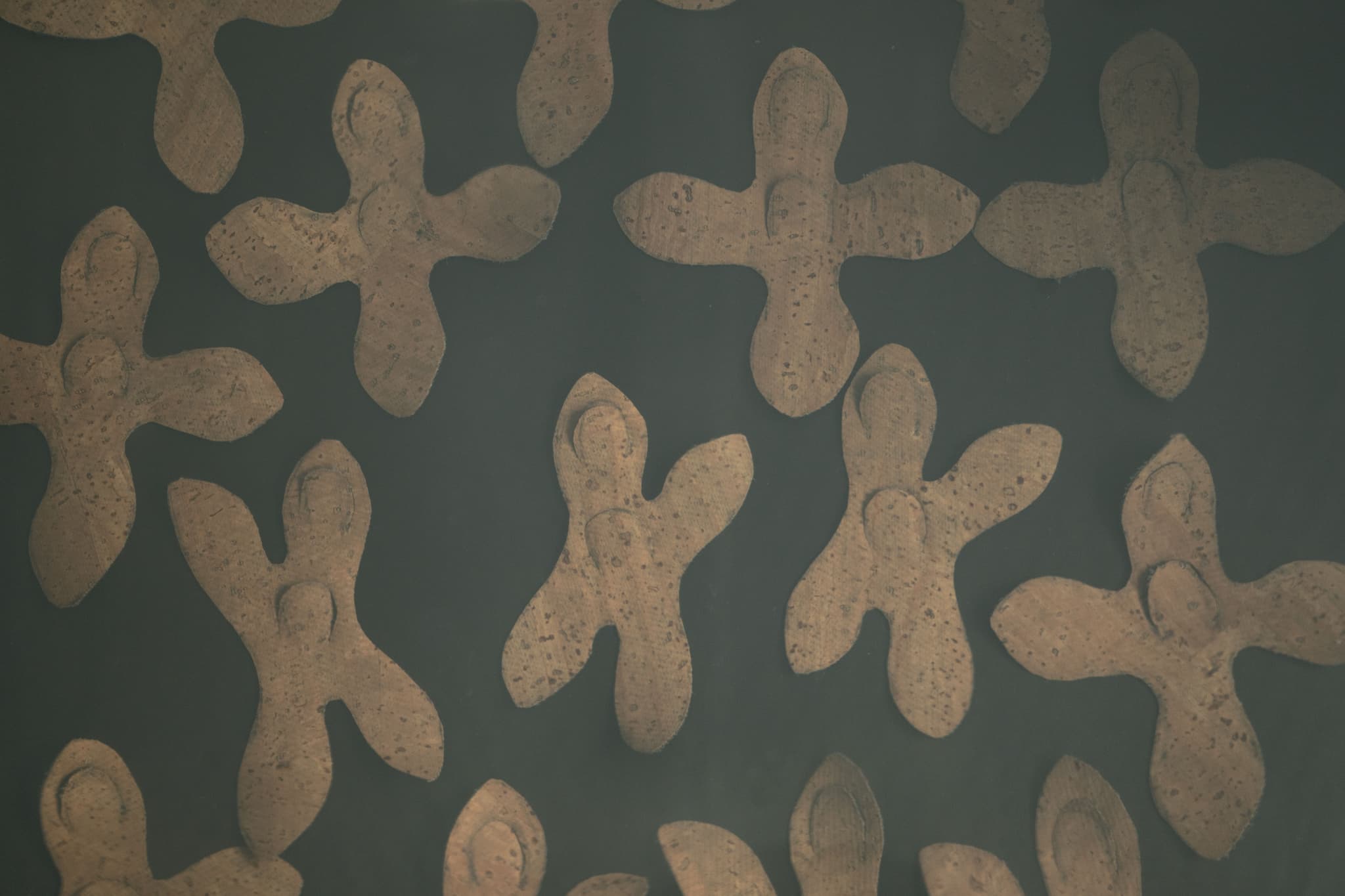
4. How does the cultural heritage of pająki ludowe inform your approach to material agency and kinetic form in this project?
The pająki ludowe - in polish meaning “folk spiders” - formed the conceptual and formal foundation of this research. These traditional straw mobiles were once widespread across Central and Eastern Europe, appearing not only in Poland but also in regions of Lithuania, Belarus, Ukraine, Slovakia, and parts of Scandinavia. Known under different local names, they shared a similar typology: suspended, geometrical structures crafted from straw, peas, feathers, or brightly coloured paper. Their delicate frameworks filled domestic interiors with slow, rhythmic motion, responding to air currents and the seasonal cycles of the household.
Historically, payonke occupied a central place in rural interiors. They were typically hung from the ceiling during Christmas, Easter, harvest time, or major life events such as weddings. Far more than decorative objects, they acted as protective talismans, believed to attract prosperity, fertility, and harmony to the home. Their ornamental compositions symbolised balance and renewal - concepts deeply rooted in pre-Christian Slavic traditions. A payonk that moved freely in the breeze was considered a positive omen, while one that hung motionless might suggest disharmony or stagnation. In this sense, these mobiles already embodied a sensing, but in this tradition it was based purely on spiritual beliefs.
Equally important is the social dimension of the craft. The making of pająki was traditionally the domain of women, who passed down patterns, techniques, and symbolic meanings from generation to generation. Earlier examples were made from agricultural remnants such as straw, peas, potatoes, or beetroot; by the late nineteenth century, these materials were gradually replaced with coloured paper, textiles, and glass beads. In every instance, the craft showed how during different times, the craft adapted within what was accessible and what was possible to find. Now, the craft has mostly disappeared and my idea was to revive it with new “livingness” - new materiality within how to look at the new, without forgetting the old values and systems.
This historical and cultural richness provided a framework for reinterpreting pająki within the context of biodesign. Rather than treating them as static artefacts of folk culture, Payonke positions them as systems of environmental communication - early examples of kinetic design shaped by the natural dynamics of the home. Their sensitivity to air movement parallels the principles of hygromorphism explored in this project: both are based on the translation of environmental fluctuations into physical motion.
By drawing from this lineage, Payonke extends the symbolic and functional roles of the pająk. It is not merely inspired by its visual form, but by its conceptual core - the idea of a material that senses, responds, and protects. Translating that principle into a contemporary material system involved embedding living microbial components into a natural matrix, allowing the object to react autonomously to humidity changes. In this sense, the project repositions craft as an active interface between tradition and scientific innovation.

5. Could you describe the method used to integrate Bacillus subtilis spores into the cork matrix? Were there specific sourcing or sterility considerations during production?
The process of integration was grounded in experimentation with natural substrates. Based on Dr. Emily Birch's research, I established the way to grow, sporulate, and apply the spores onto the material surface. I experimented with different 3D printed spreaders, biological glue, and different equalization systems in the designed humidity chamber.
Moreover, it is worth mentioning that the whole structure was based on krochmal - a polish starching technique to stiffen the forms in a 3D shape.
The bacteria was sourced from safe, non-pathogenic B. subtilis strains via Grow Lab at Central Saint Martins. We maintained a controlled workflow to prevent cross-contamination and ensure biosafety compliance. During production, each batch was sterilised before spore application, and all handling was done in a biosafety cabinet. The spores themselves remain dormant and non-replicating in the final material - activated only by changes in humidity, not by nutrient exposure - making them stable for interior use.
Can making invisible processes visible help us care more for what we can't see? Can traditional craft become a tool for microbial stewardship? Payonke reframes the pająk as a model for symbiotic microbial design - where material tradition and microbial life coexist in an active, sensing relationship. What was once a cultural artefact of spiritual protection becomes a contemporary, data-free environmental indicator. In both forms, the mobile remains a mediator between human life and its environment - an evolving expression of how we interpret and care for the objects and microbes around us.
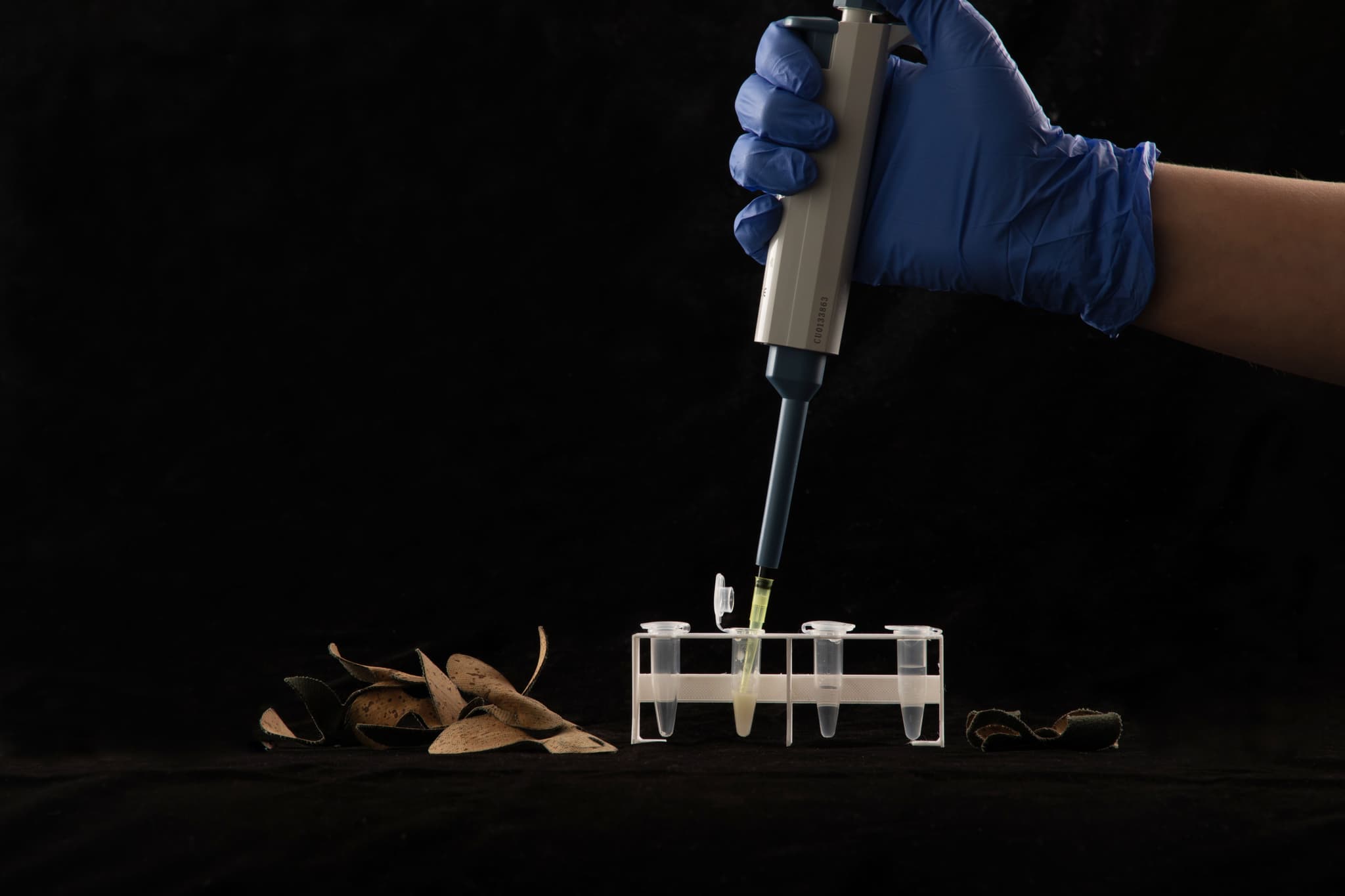
6. The installation proposes a shift from sterilised to symbiotic interiors. How do you envision this microbial-materiality being adopted in larger-scale architectural or commercial applications?
I see significant potential for integrating this kind of microbial-materiality into responsive architectural systems and smart interiors. Components such as wall panels, acoustic baffles, or ceiling systems could be reimagined as passive indicators of environmental change, reducing reliance on electronic sensors in low-energy contexts. Even everyday household items could participate in this responsive ecology - for example I imagine a set of curtains that visually “communicate” when it’s time to open a window, translating humidity or air-quality changes into human action.
Scaling this approach would require modular fabrication and a deeper understanding of material behaviour across time and environmental conditions, but the benefits are compelling. Not only could such systems reduce electronic waste, they also open new pathways toward symbiotic interiors - spaces that sense, adapt, and coexist with microbial life rather than excluding it.
Another promising direction lies in exploring the probiotic potential of B. subtilis. Beyond its hygromorphic responsiveness, this species is being studied for its capacity to promote healthier indoor microbiomes. Professor Richard Beckett (UCL), by an interesting approach and research in his Probiotic Cities book, has demonstrated how introducing beneficial microbial “players” can outcompete pathogens indoors. Integrating such principles into material systems could lead to healthier, more ecologically balanced buildings.
At Biofabricate (the BioFab Fair during London Design Festival), I had a fascinating conversation about this very idea. We discussed research suggesting that newborn rooms - ironically some of the most sterilised environments, but studied to be the least healthy indoors, often contain the highest concentrations of toxic volatile compounds from new plastics and furnishings. We discussed an idea of creating a probiotic crib mobile, designed to foster a balanced microbiome and utilise the hygromorphic behaviour different way - so the possibilities are endless.
Ultimately, I see this shift - from sterilised to symbiotic interiors - as both a technological and cultural transformation. It invites us to rethink cleanliness, control, and comfort through a new lens - one where microbial collaboration becomes a core design principle, and our built environments begin to connect and interact with us.
7. Were there constraints in terms of shelf life, dormancy duration, or spore viability that you had to design around? How might sourcing platforms better support designers working with living materials?
Yes, viability and dormancy were important design considerations. Bacillus subtilis spores are remarkably resilient and can remain active for several years when stored in dry, dark conditions. Importantly, they do not require repeated cycles of high and low humidity to stay viable, which makes them suitable for long-term applications in interior environments. That said, repeated exposure to extreme humidity or nutrient-rich conditions will gradually reduce their responsiveness, so operational lifespan must be considered in design.
More research is needed to fully understand how spores behave over long periods in real-world indoor environments, and to optimise maintenance protocols without compromising their longevity or responsiveness.
From a broader perspective, designers working with living materials still face a fragmented ecosystem. Few platforms provide safe practices, certified microbial strains, standardised safety data, and validated formulation protocols. Shared resources (material libraries but for bioactive and microbial systems), would greatly accelerate the development of experimental, responsive designs.
One initiative addressing this gap is DE-LAB, which I am collaborating on with Biodesigner and Creative Director Elie Al-Marji through the UAL MEAD Fellowship. DE-LAB explores ways to connect designers with biodesign and living materials, providing not only access to knowledge but also guidance on working safely, reproducibly, and creatively with them. Currently, we are developing a book and an exhibition with recipes, handling protocols, and testing approaches that could form the basis of more structured platforms for designers, making it easier to prototype, iterate, and scale bio-responsive systems without needing to navigate a fragmented biodesign knowledge independently.
This combination of fundamental democratised scientific research, accessible protocols, and design-focused platforms is essential for integrating living materials into architecture, interiors, and product design in a safe, sustainable, and innovative way.
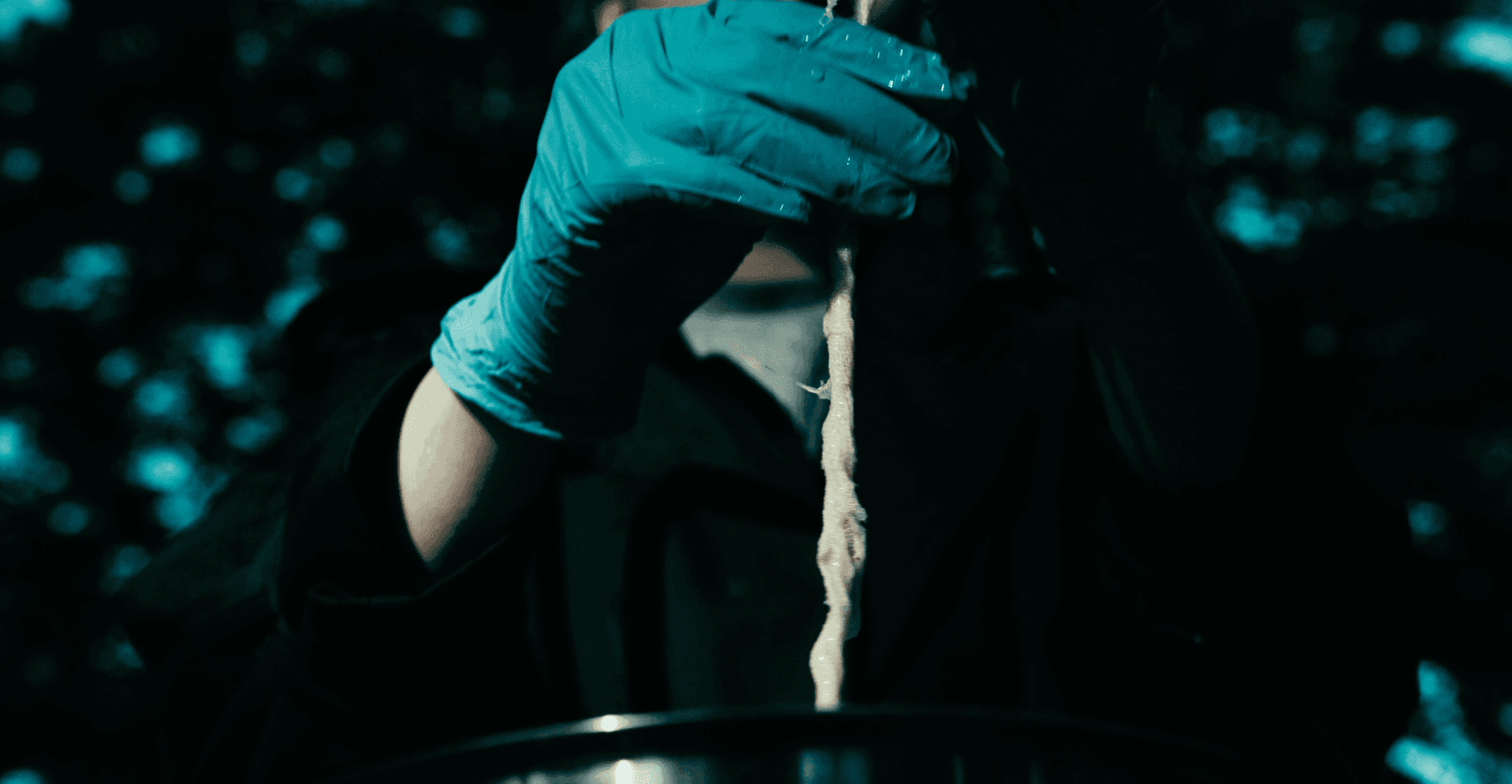
8. The responsive movement of Payonke appears choreographed rather than erratic. How did you calibrate this controlled kinetic behaviour using a biologically reactive material?
The movement was refined through the spore application. By applying spores in directional zones with a pipette and spreading them with a spreader, I could program how each element of the structure bends as humidity changes. For example, applying spores along half of a material strip produced a predictable curvature toward the dry side. Based on Dr. Emily Birch’s research, I also tested various laser etching techniques (especially with latex) where the shape could be controlled depending on the etch design. This provides a large playground for exploring how we can navigate microbial movement.
I ran multiple iterations inside the humidity chamber to calibrate the mechanical response. This allowed me to produce controlled movement that reads as intentional and designed, rather than as random biological activity.
9. In developing this non-electronic alternative to indoor environmental monitoring, how do you see the role of “data” evolving, especially when it’s expressed visually through shape and form rather than numbers?
Payonke proposes that environmental data doesn’t always need to be quantified, but it can be experienced. The kinetic changes in the material communicate humidity visually and spatially, allowing us to sense through observation rather than measurement.
This approach reframes “data” as embodied feedback rather than numerical output. It’s a move toward environmental literacy that is microbial, sensory, aesthetic, and intuitive. In architectural terms, this could shift how we design responsive spaces - where performance is visible through biodesigned behaviour, not just dashboards.
It also fosters a deeper connection with the materials around us - visual changes allow us to engage with them in a more intuitive and immediate way than simply interpreting numerical data.
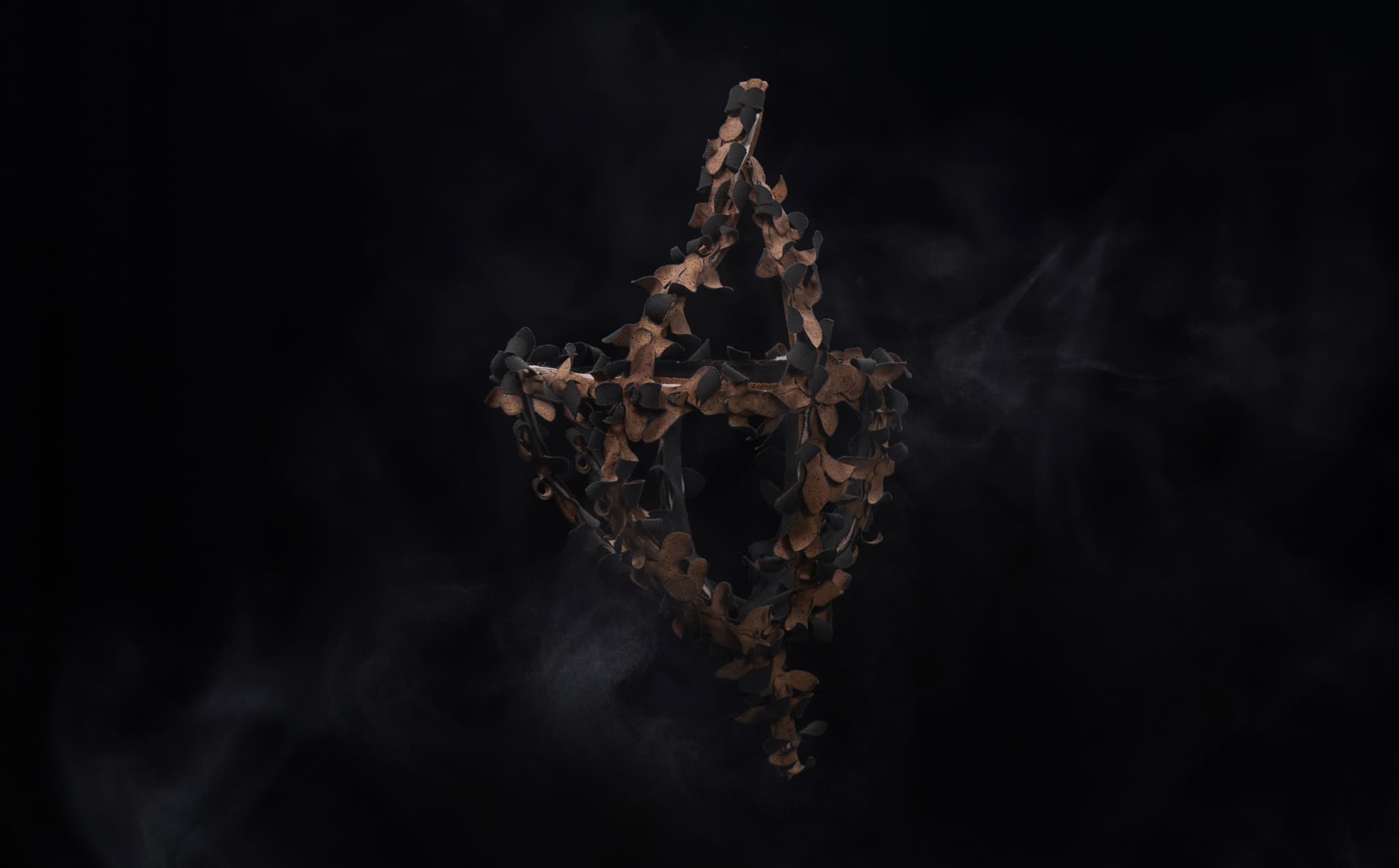
10. What are the degradation pathways or end-of-life considerations for Payonke, given that it combines biodegradable substrates with living elements?
All components of Payonke are biodegradable and non-toxic. Cork and the biological glue decompose naturally, while the spores lose viability through exposure and hydration cycles. The installation can be disassembled, with active components composted or disposed of according to biosafety guidelines. Moreover, the bacterial spores can potentially enrich the soil. The goal was to create a material system that leaves no synthetic waste and has some regenerative properties while being fully aligned with circular design principles.
11. With growing pressure to quantify material performance and compliance, do you find current supplier directories or databases are fit for purpose when working with experimental or biologically active materials?
Current material databases aren’t yet equipped for living or biologically active materials. They do not include data on microbial viability, biosafety classification, or long-term environmental interaction. For the field to progress, we need cross-disciplinary platforms that link biological sourcing with design validation - combining scientific data (strain behaviour, response) with material performance metrics (durability, moisture response, lifespan).
Equally important are accessible testing tools, for example open-source protocols, that allow designers to validate microbial materials without needing full research facilities. Standardisation in these areas will be key to scaling bio-responsive systems safely and responsibly.
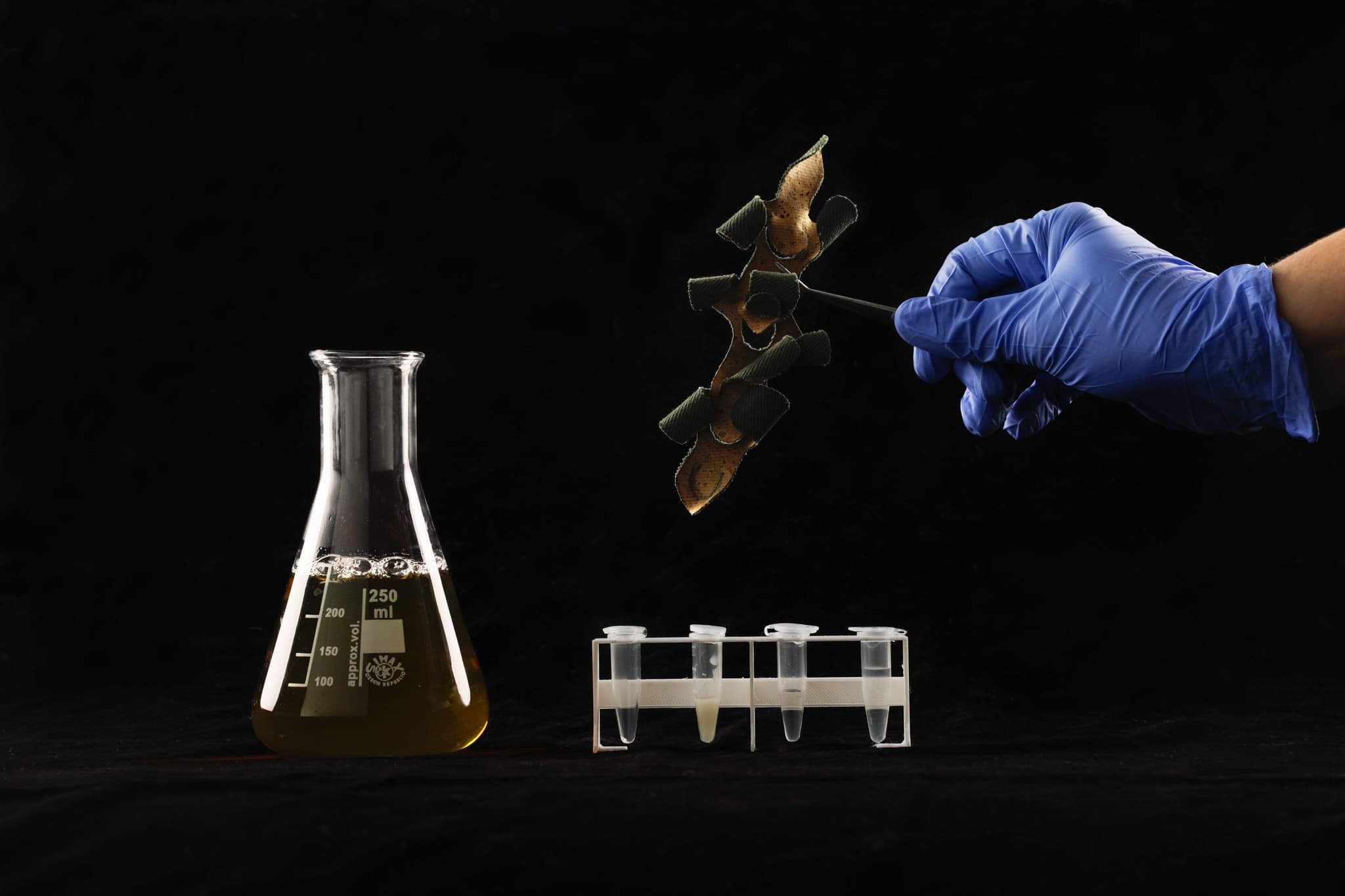
12. Looking ahead, what capabilities or tools would make it easier for other designers to source, prototype, and validate similar bio-responsive systems at scale?
I think there’s a real need for infrastructure that bridges design and biology in practical, accessible ways. Right now, most designers working with living or bio-responsive materials have to navigate fragmented resources - sourcing strains from research labs, accessing sporulation data from scientific papers, or adapting biological protocols designed for completely different contexts.
To move forward, I believe we need open-source microbial and materials databases - like a “bio-materials library” that includes certified strains, viability data, compatibility with substrates, and environmental performance metrics. That would enable designers to make informed, safe, and creative decisions early in the prototyping process.
Equally important are modular bio-prototyping tools - affordable lab tools, DIY incubators, or responsive testing kits - that make it possible to iterate without relying on full wet-lab facilities. Platforms like DE-LAB, which I’m currently developing with Elie Al-Marji through the Mead Fellowship, aim to support exactly this: connecting designers with biological researchers, developing “recipes” for microbial materials, and creating safe and accessible frameworks for experimentation.
Finally, a shared validation network - where designers could test environmental safety, longevity, and performance in real-world settings - would help translate these materials from prototypes to scalable applications. At the moment, every project is a bespoke system; we need infrastructures that allow for standardisation without losing creativity and its sustainability. On larger scale, it is also about mindset shift, social acceptance and the notion of care embedded within each microbial, material system.
